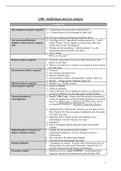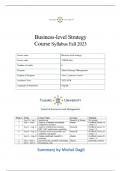Summary
Summary Commercial Dispute Resolution (CDR) - LPC - Distinction Grade - Complete Notes
- Course
- Institution
Commercial Dispute Resolution (CDR) - Distinction - Full Summary. Predominantly B&W for printer costs and for own highlighting/colour coding. Includes cases not included in standard course material but done via research for extra marks. All in order of course as covered.
[Show more]




